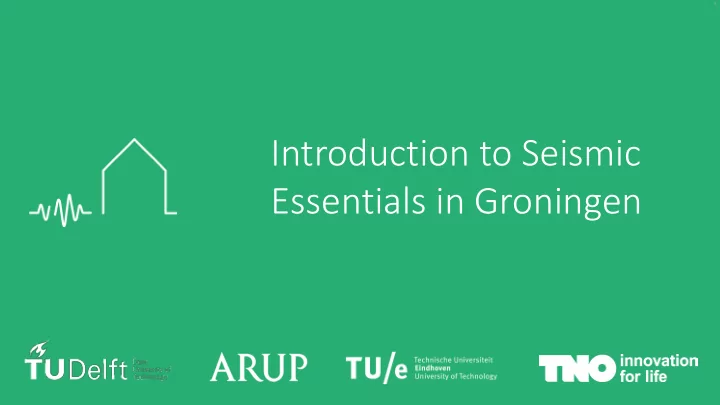

Introduction to Seismic Essentials in Groningen
7.3 Timber Structures By Prof André Jorissen MSc PhD – TU Eindhoven
Wind | Model 1
Wind | Model 2
Seismic Activity | Model 3
Seismic Activity | Model 4
Seismic Activity dynamic amplification factor F base = mass acceleration q
Seismic Energy (a) no ductility (b) low ductility (c) high ductility NO LOW HIGH energy dissipation energy dissipation energy dissipation µ = δ p µ = δ 2 δ 1 δ e q = 2 µ − 1
Timber loaded: tension or compression
Structural / Material Behaviour (failure) Brittle failure: NOT to be preferred • bending • shear • tension parallel to the grain ( σ t,0 ) • tension perpendicular to the grain ( σ t,90 ) • glued connections • connections with split ring and plate connectors
Structural / Material Behaviour (failure) dowel type fastener compression
Dowel Type Fasteners loaded in shear
Reinforcements
Reinforcements for Portal Frame Corner
Traditional Timber Structures single step joint
Thank you for your attention!
References and further reading Parisi, M.A. and Piazza, M. (2015). Seismic strengthening and seismic 7.3 improvement of timber structures . Construction and Building Materials 97, p55-56. Published by Elsevier. Fragiacomo, M., Amadio, C. and Rajgelj, S. (2006). Evaluation of the structural response under seismic actions using non-linear static methods. Earthquake Engineering and Structural Dynamics 35, p1511-1531. Published online 19 June 2006 in Wiley InterScience: www.interscience.wiley.com.
Recommend
More recommend